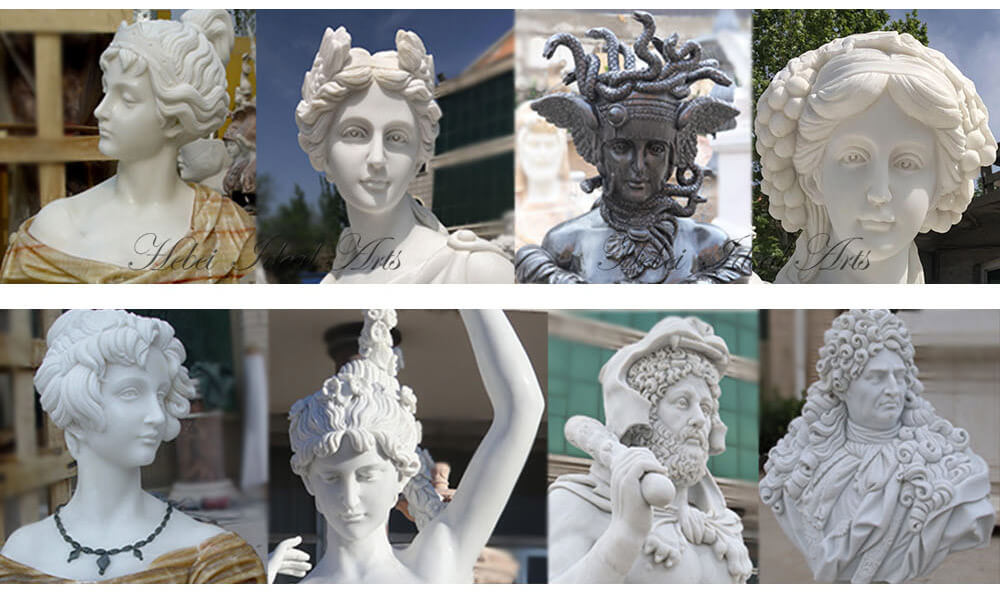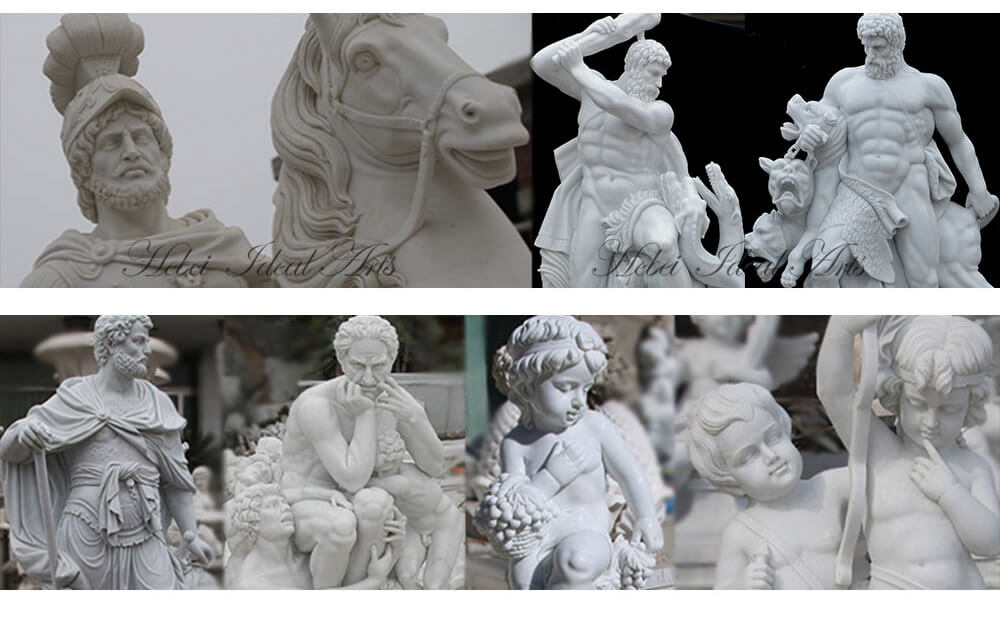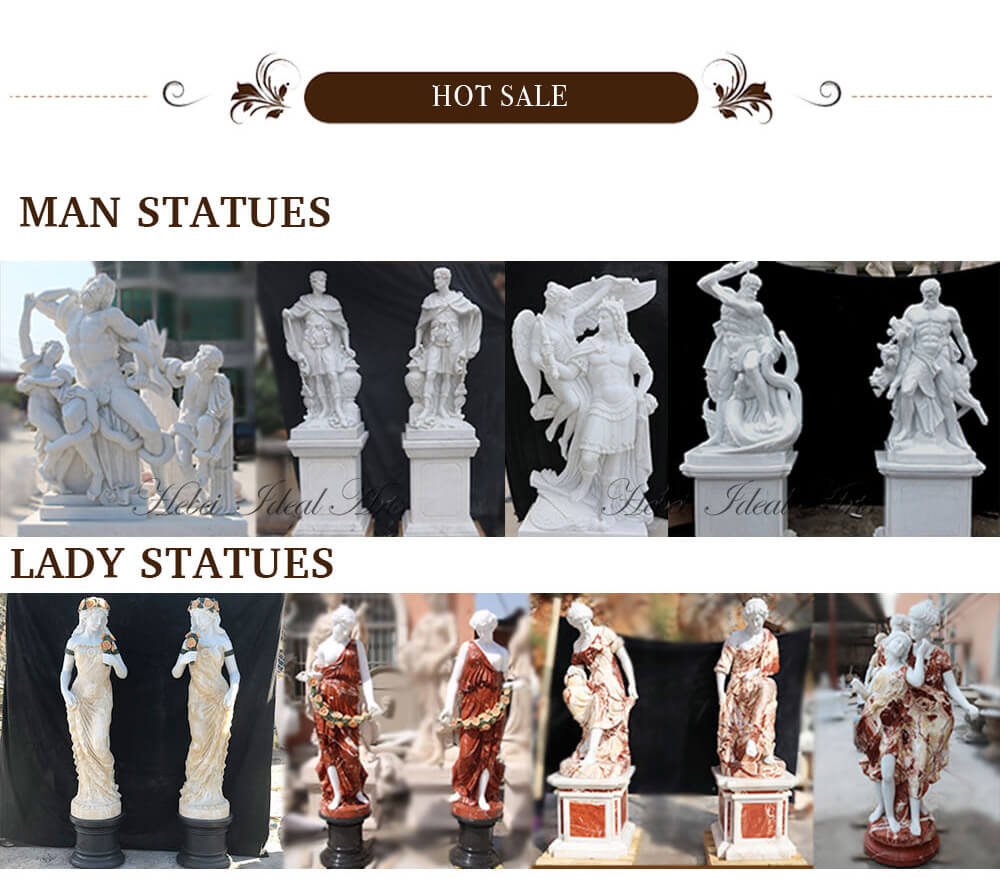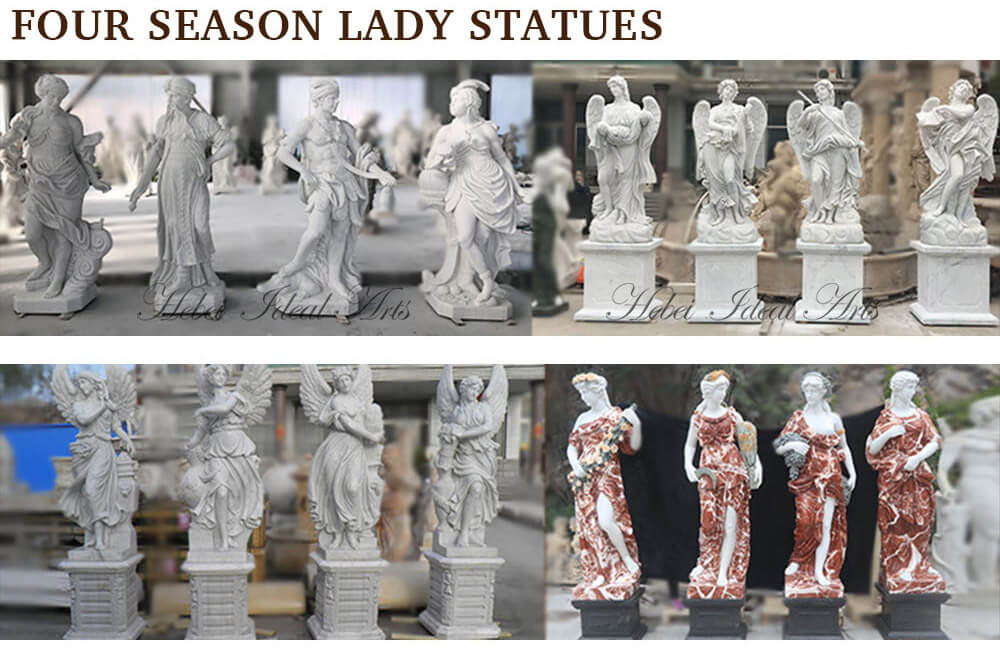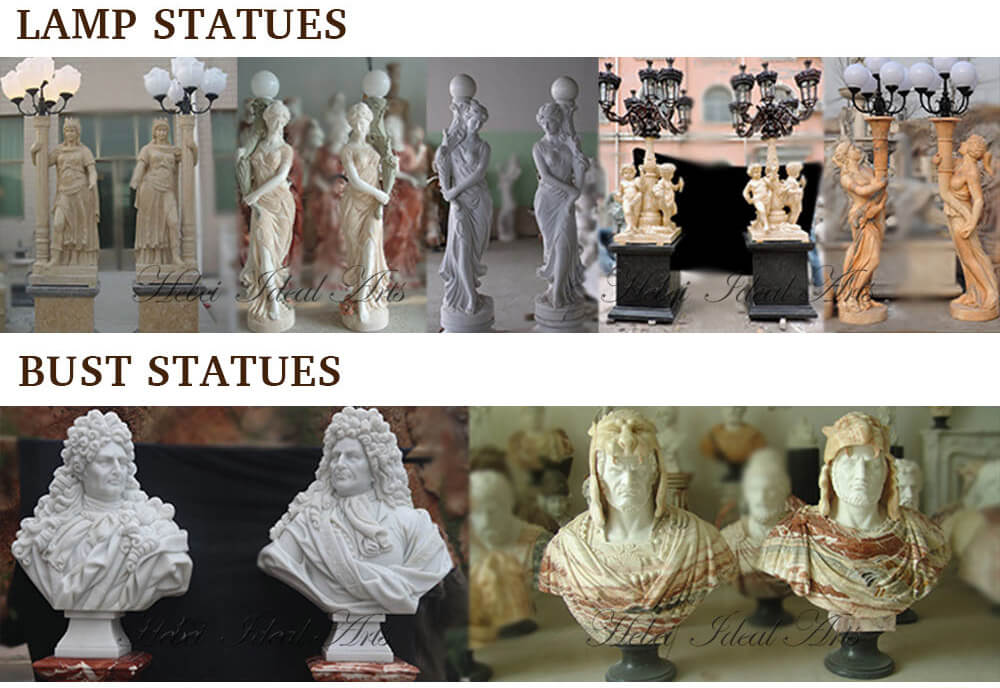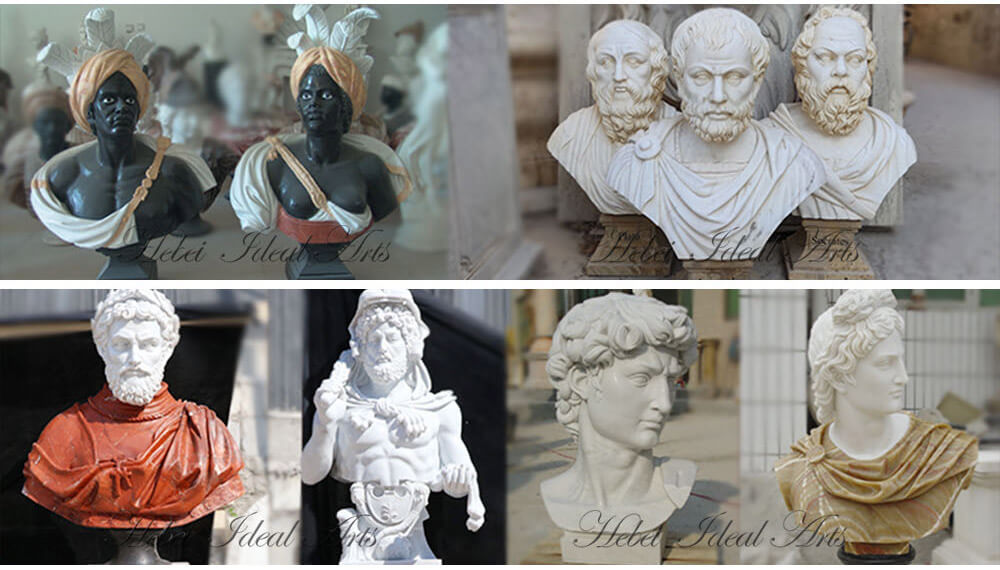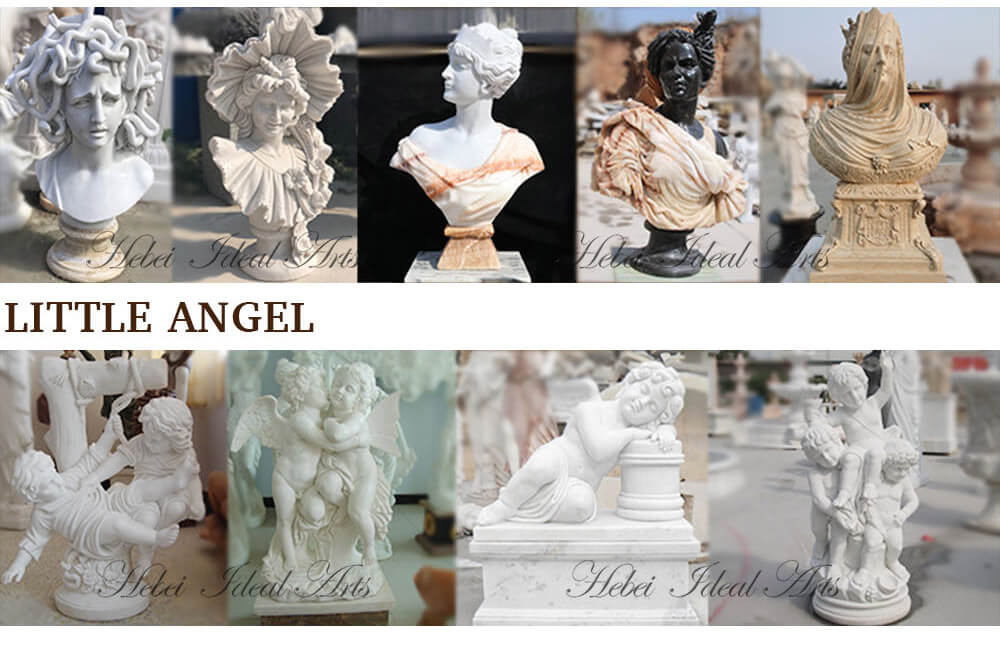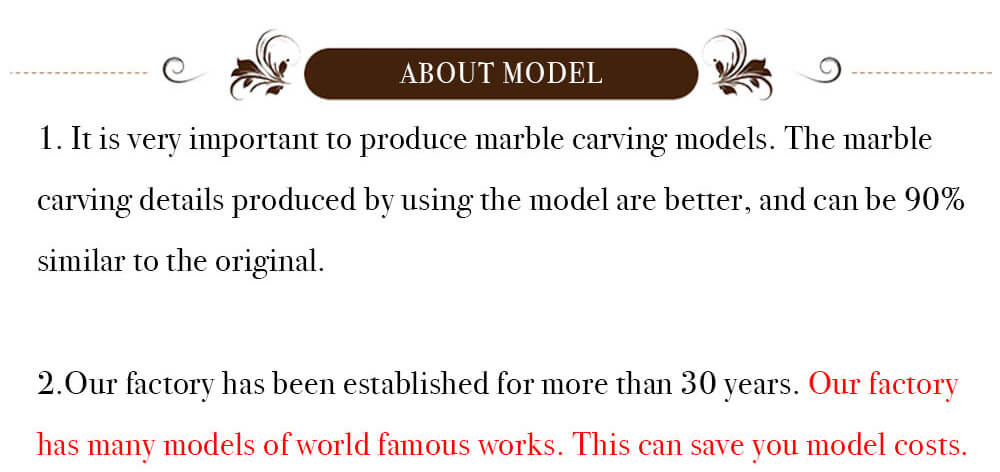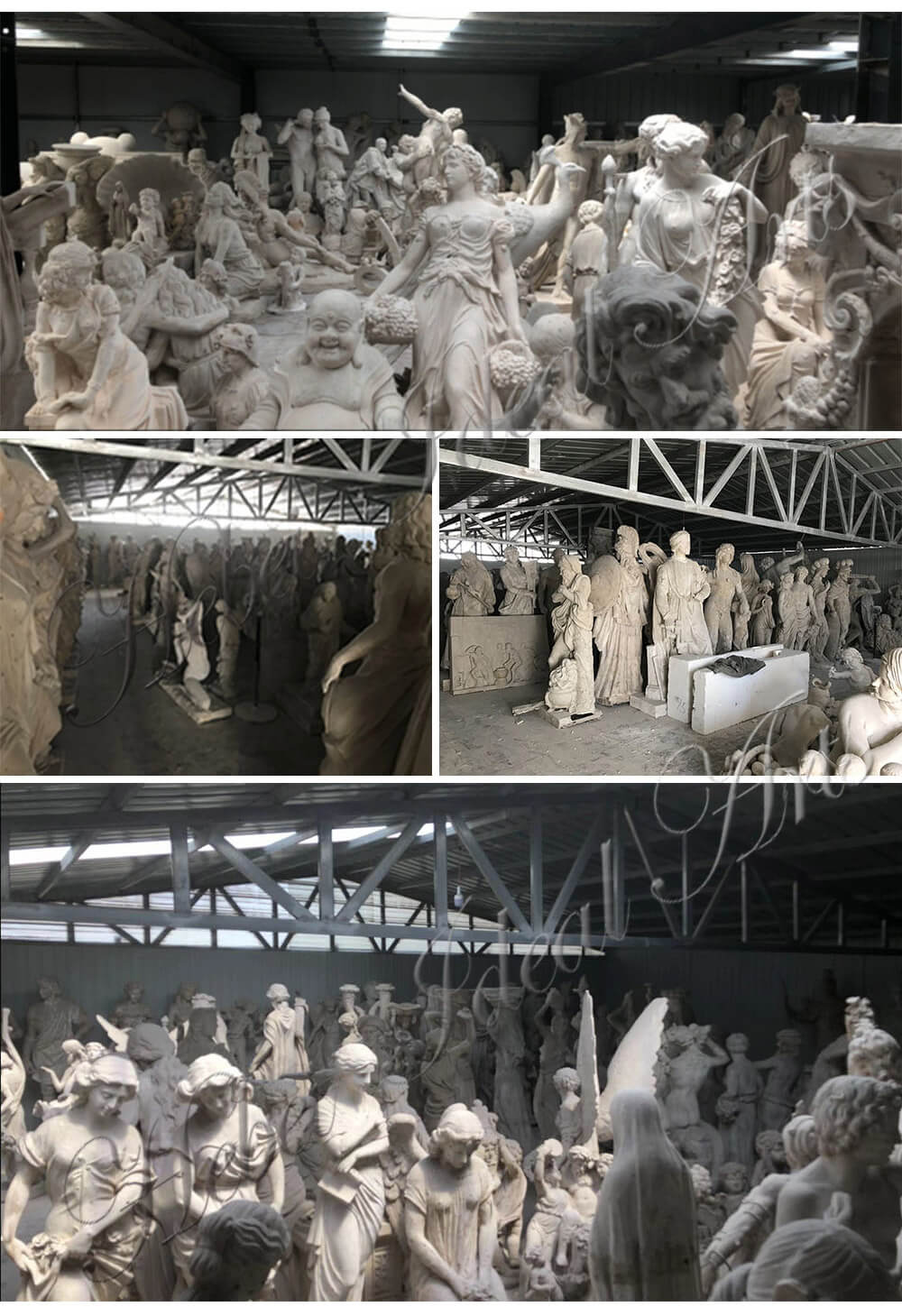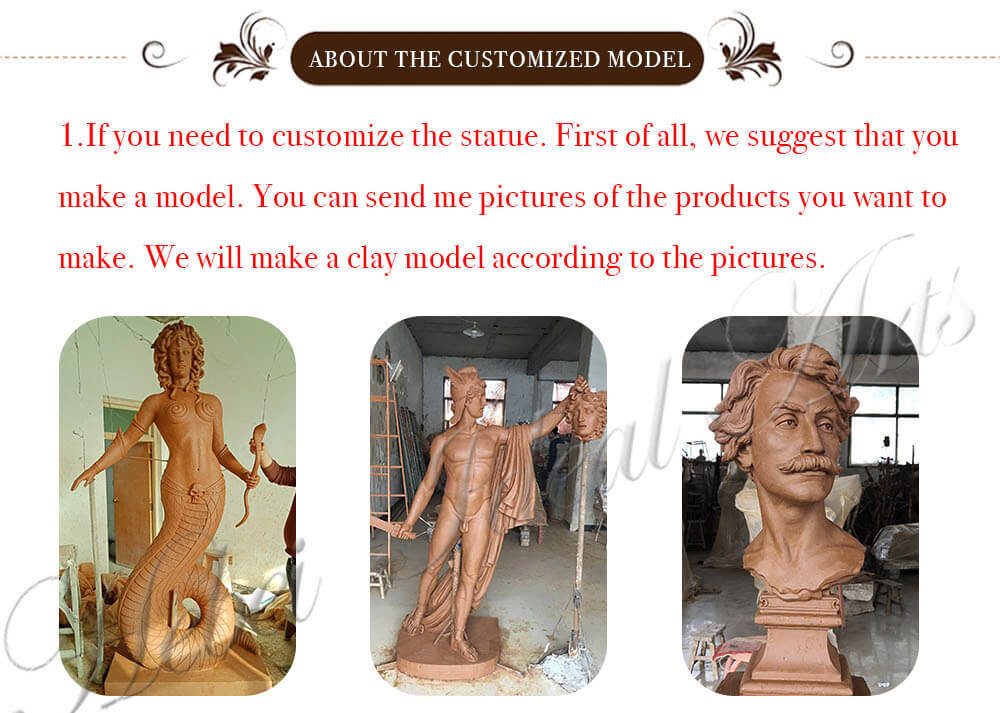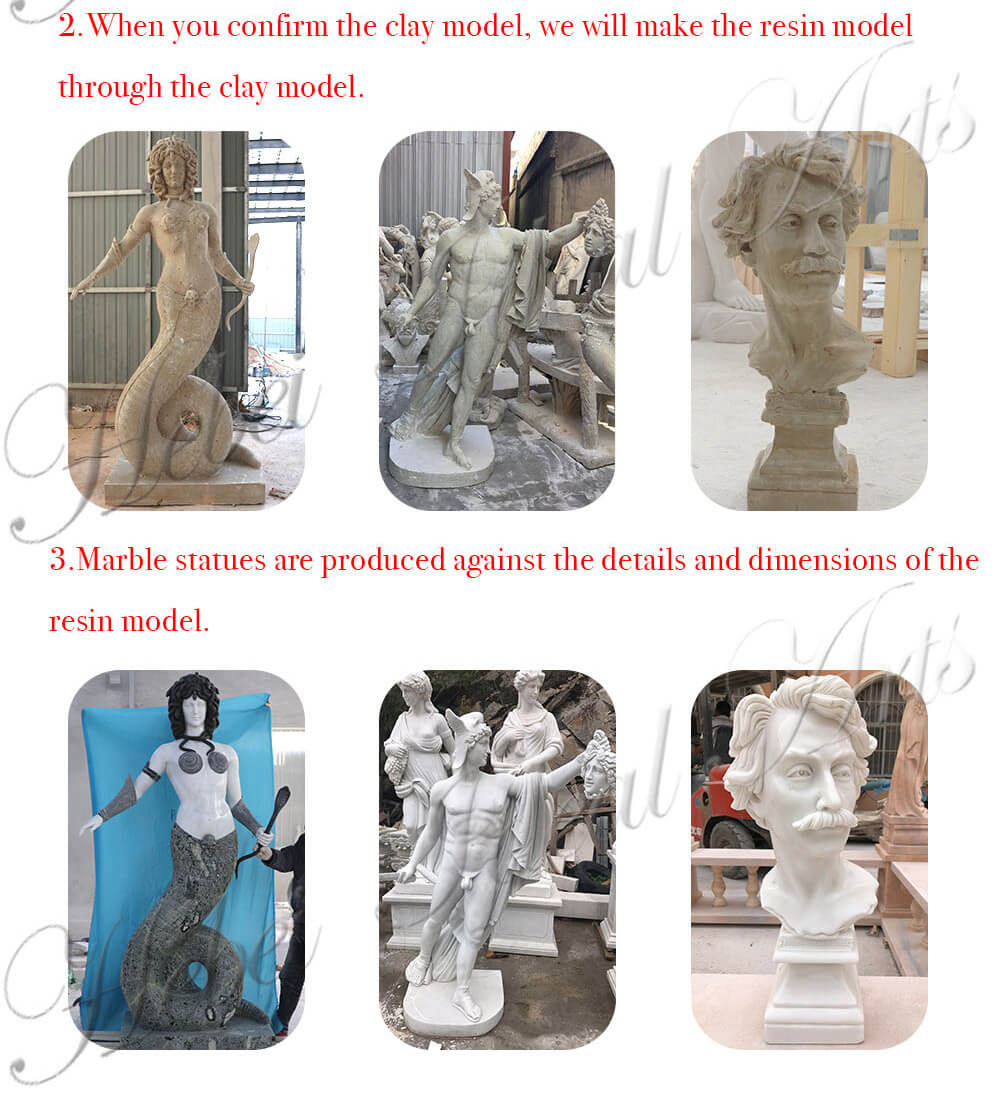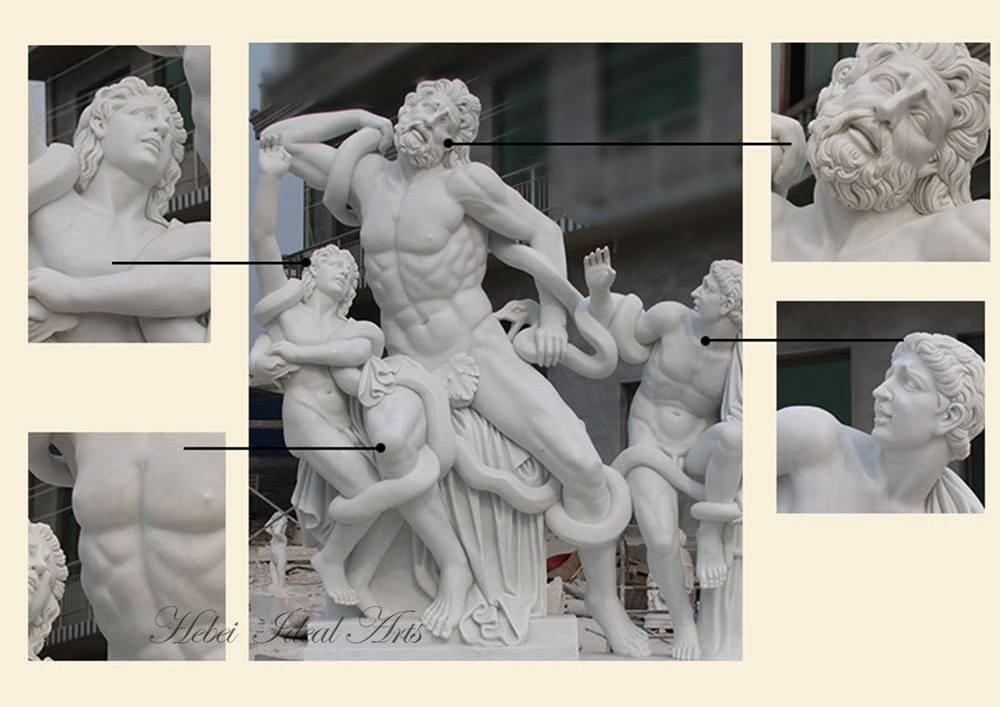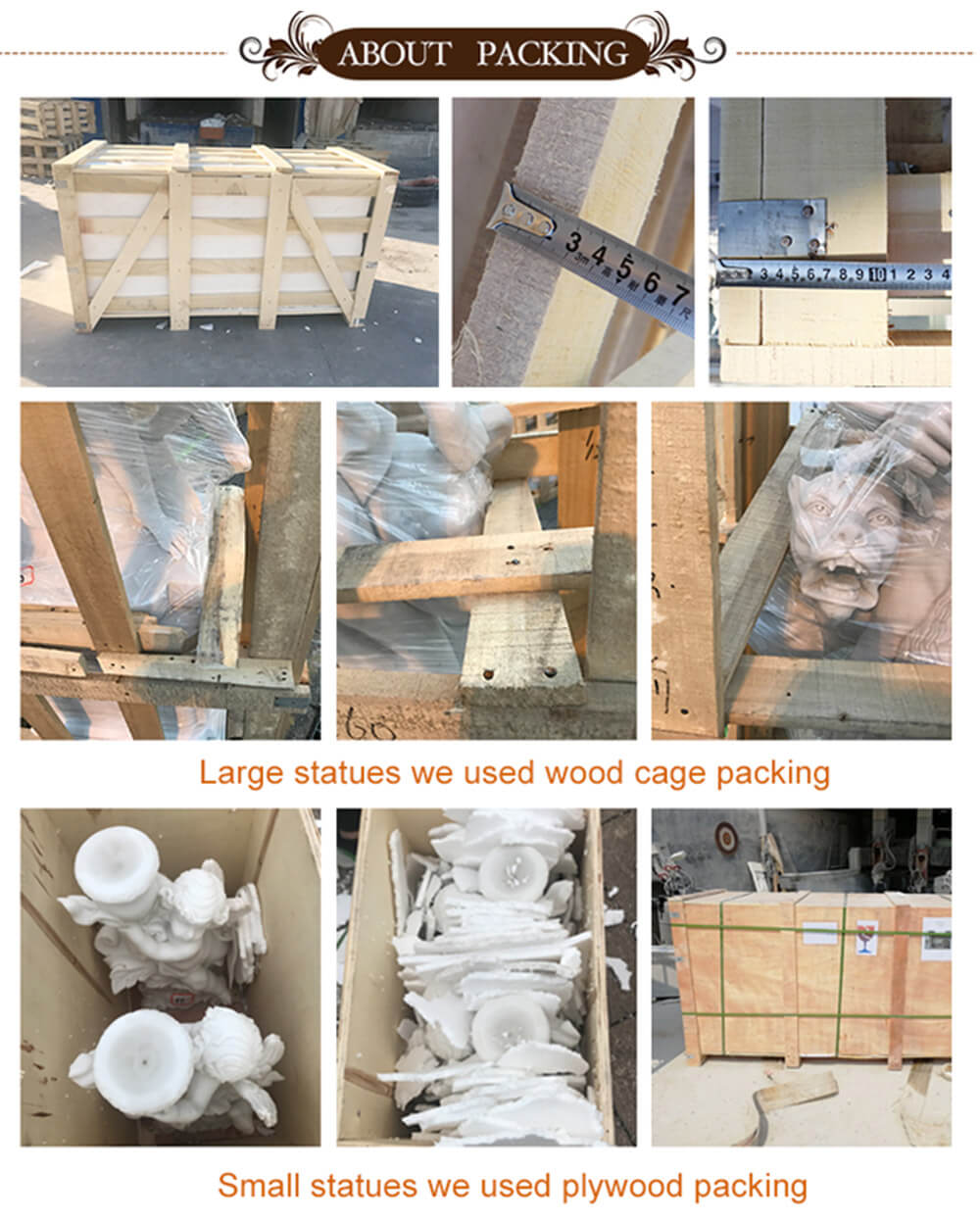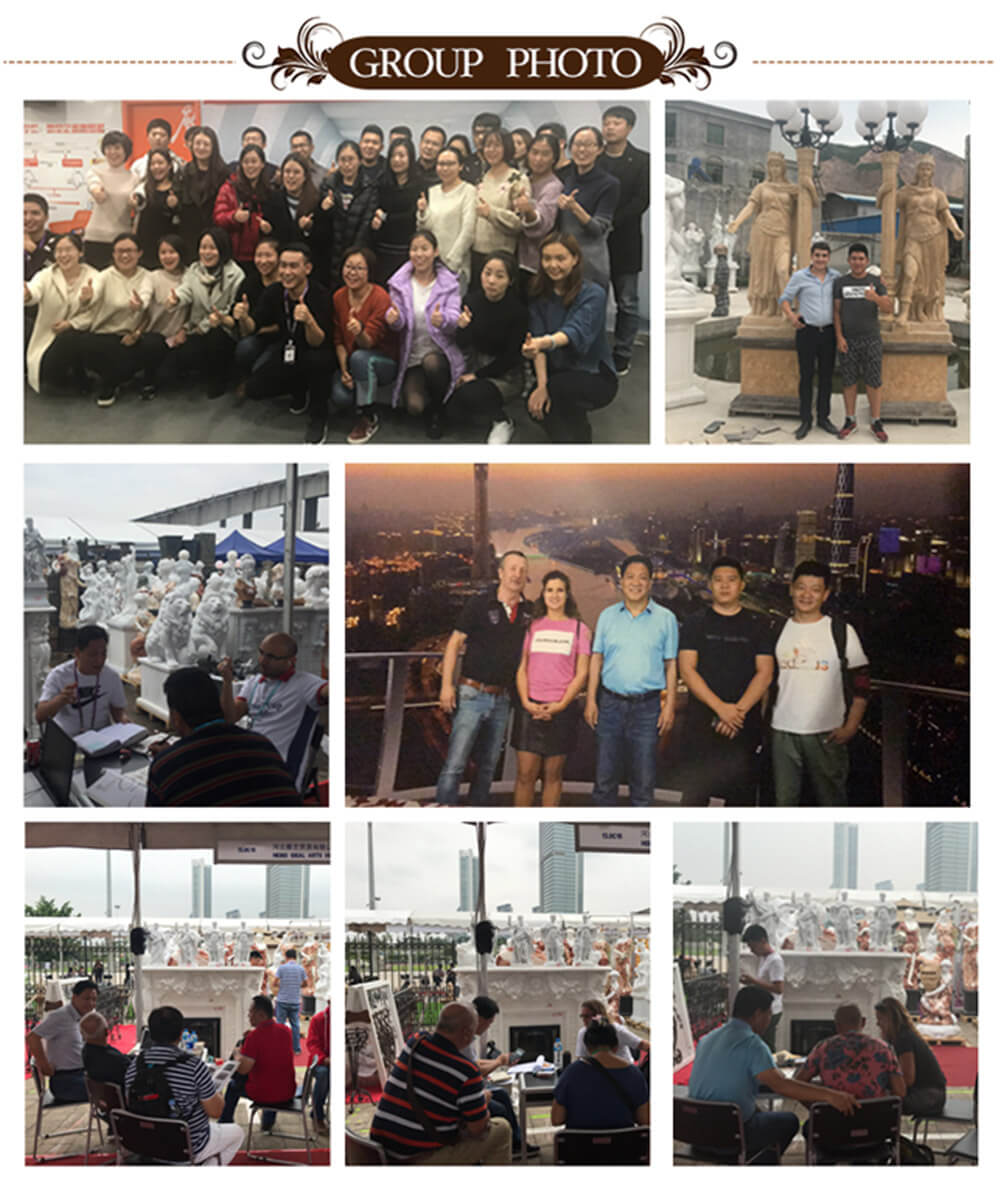 Our Apollo and Daphne statue replica is a reduction of the famous original located in the Galleria Borghese in Rome, Italy. This astonishing statue is one of the most renown works of the Baroque sculptor Gian Lorenzo Bernini. Sculpted between the years 1622 and 1625, Apollo and Daphne statue was one of the last of a number of artworks commissioned by Cardinal Scipione Borghese. The sculpture shows the moment when Apollo's hand reaches Fanny's body, both of them are running in the wind, their bodies light and graceful. In the performance of the sculpture, Daphne's body is so warm and real, she began to turn into a laurel tree, her walking legs turned into a trunk and planted in the ground, and leaves grew between the fluttering hair and stretched fingers. However, Daphne's entire body still has a volley-like attitude. She tilted her head, her eyes squinted, her eyes changed from panic to numbness. Apollo watched Daphne turn into a laurel tree, his expression turned from surprise to sadness, but he couldn't save it. One of his hands is still on Daphne's body, and the other hand extends diagonally downward, forming a straight line with Daphne's arm. "Apollo and Daphne" is a sculpture created by Berni for the villa of Pope Pionne Porguez, the cardinal of Rome. There are four groups of sculptures, and this is one of them. The sculpture is based on a myth. It is said that Apollo, the sun god, offended Cupid, the god of love. The naughty Cupid shot the arrow that could ignite the flame of love at the sun god Apollo, and shot another arrow to dispel love. Daphne, the daughter of the river god. When Apollo wooed Daphne, Daphne resolutely refused, and even when she saw Apollo, Daphne would run away. When Apollo was about to chase Daphne, Daphne asked her father River God for help. Just when Apollo touched Daphne’s body, Daphne turned into a laurel tree, her hair turned into leaves, and her wrists turned into Branches, two legs turned into trunks, feet turned into roots and plunged into the soil. Annoyed, Apollo still loves Daphne. He made his own laurel wreath with the leaves of the laurel tree that Daphne turned into. This is also the origin of the term "laurel wreath". Apollo's behavior eventually moved Daphne who became a laurel tree. This sculpture represents the moment when Apollo just touched Daphne's body and Daphne became a laurel tree. In the work, the beautiful Daphne has begun to turn into a laurel tree, but it has not been completely transformed. Her toned legs gradually turned into tree trunks, planted in the earth, and leaves grew on her wavy hair and slender fingers. Even the softest breasts on her body were covered with a thin layer of bark. However, Daphne's beauty is not dimmed because part of the body has become a plant. Her volleying posture, the graceful S shape formed by her arms and body, made all viewers admire the beauty of the young girl's youth. Moreover, her head tilted and her horrified gaze can easily make people feel compassionate. In contrast, Apollo watched his beloved turn into a laurel tree, but there was no way to save it, and his expression became helpless. He stretched his left hand forward and gently embraced Daphne's body, while his right hand stretched diagonally downward, still maintaining a chasing posture. More mysteriously, his right hand and Daphne's right arm formed a straight line, giving the work a feeling of turbulence and full of artistic tension. [6] The reason why "Apollo and Daphne" is shocking is that its entire work is in a dramatic state of intense movement. The marble seems to have lost its weight in Bernini's hands, Apollo's clothes and Daphne's long hair Floating in the wind; in contrast to this lightness is the dignified power of the character's body, and the asymmetrical contour lines render the dramatic situation, giving people a feeling of lightness and passion, liveliness and restlessness. Baroque sculpture emphasizes momentum and dynamic characteristics, which are fully displayed here. In addition, this work also shows the perfection of Baroque sculpture. Baroque sculptures are all based on the true representation of different objects. The sculptor used superb realism skills to show various textures and texture effects. In this group of sculptures, the smooth skin, fluttering clothing and hair, and swaying branches and leaves are all truly and moving, making the marble seem to have life. Bernini also successfully solved the problem of shaping. In this group of sculptures, Apollo raised his left leg back, so that the weight of his body fell on a single right leg. This kind of sculpting requires highly difficult carving techniques, which should be avoided as much as possible for the average sculptor. As for Apollo’s raised right arm, left leg, and clothing that floats from his waist, they are all naturally suspended and stretched without relying on any support. These are not what ordinary sculptors can do. The sculptor showed the change in this moment very wonderfully, but Daphne, who was still running, had already seen her fingertips turn into branches and leaves, and her beautiful body was about to become the fragrance of osmanthus. It is really rare in art history to be able to transform the flesh and branches and leaves into such natural, real, beautiful and elegant on marble.
Our Apollo and Daphne statue replica is a reduction of the famous original located in the Galleria Borghese in Rome, Italy. This astonishing statue is one of the most renown works of the Baroque sculptor Gian Lorenzo Bernini. Sculpted between the years 1622 and 1625, Apollo and Daphne statue was one of the last of a number of artworks commissioned by Cardinal Scipione Borghese. The sculpture shows the moment when Apollo's hand reaches Fanny's body, both of them are running in the wind, their bodies light and graceful. In the performance of the sculpture, Daphne's body is so warm and real, she began to turn into a laurel tree, her walking legs turned into a trunk and planted in the ground, and leaves grew between the fluttering hair and stretched fingers. However, Daphne's entire body still has a volley-like attitude. She tilted her head, her eyes squinted, her eyes changed from panic to numbness. Apollo watched Daphne turn into a laurel tree, his expression turned from surprise to sadness, but he couldn't save it. One of his hands is still on Daphne's body, and the other hand extends diagonally downward, forming a straight line with Daphne's arm. "Apollo and Daphne" is a sculpture created by Berni for the villa of Pope Pionne Porguez, the cardinal of Rome. There are four groups of sculptures, and this is one of them. The sculpture is based on a myth. It is said that Apollo, the sun god, offended Cupid, the god of love. The naughty Cupid shot the arrow that could ignite the flame of love at the sun god Apollo, and shot another arrow to dispel love. Daphne, the daughter of the river god. When Apollo wooed Daphne, Daphne resolutely refused, and even when she saw Apollo, Daphne would run away. When Apollo was about to chase Daphne, Daphne asked her father River God for help. Just when Apollo touched Daphne’s body, Daphne turned into a laurel tree, her hair turned into leaves, and her wrists turned into Branches, two legs turned into trunks, feet turned into roots and plunged into the soil. Annoyed, Apollo still loves Daphne. He made his own laurel wreath with the leaves of the laurel tree that Daphne turned into. This is also the origin of the term "laurel wreath". Apollo's behavior eventually moved Daphne who became a laurel tree. This sculpture represents the moment when Apollo just touched Daphne's body and Daphne became a laurel tree. In the work, the beautiful Daphne has begun to turn into a laurel tree, but it has not been completely transformed. Her toned legs gradually turned into tree trunks, planted in the earth, and leaves grew on her wavy hair and slender fingers. Even the softest breasts on her body were covered with a thin layer of bark. However, Daphne's beauty is not dimmed because part of the body has become a plant. Her volleying posture, the graceful S shape formed by her arms and body, made all viewers admire the beauty of the young girl's youth. Moreover, her head tilted and her horrified gaze can easily make people feel compassionate. In contrast, Apollo watched his beloved turn into a laurel tree, but there was no way to save it, and his expression became helpless. He stretched his left hand forward and gently embraced Daphne's body, while his right hand stretched diagonally downward, still maintaining a chasing posture. More mysteriously, his right hand and Daphne's right arm formed a straight line, giving the work a feeling of turbulence and full of artistic tension. [6] The reason why "Apollo and Daphne" is shocking is that its entire work is in a dramatic state of intense movement. The marble seems to have lost its weight in Bernini's hands, Apollo's clothes and Daphne's long hair Floating in the wind; in contrast to this lightness is the dignified power of the character's body, and the asymmetrical contour lines render the dramatic situation, giving people a feeling of lightness and passion, liveliness and restlessness. Baroque sculpture emphasizes momentum and dynamic characteristics, which are fully displayed here. In addition, this work also shows the perfection of Baroque sculpture. Baroque sculptures are all based on the true representation of different objects. The sculptor used superb realism skills to show various textures and texture effects. In this group of sculptures, the smooth skin, fluttering clothing and hair, and swaying branches and leaves are all truly and moving, making the marble seem to have life. Bernini also successfully solved the problem of shaping. In this group of sculptures, Apollo raised his left leg back, so that the weight of his body fell on a single right leg. This kind of sculpting requires highly difficult carving techniques, which should be avoided as much as possible for the average sculptor. As for Apollo’s raised right arm, left leg, and clothing that floats from his waist, they are all naturally suspended and stretched without relying on any support. These are not what ordinary sculptors can do. The sculptor showed the change in this moment very wonderfully, but Daphne, who was still running, had already seen her fingertips turn into branches and leaves, and her beautiful body was about to become the fragrance of osmanthus. It is really rare in art history to be able to transform the flesh and branches and leaves into such natural, real, beautiful and elegant on marble.